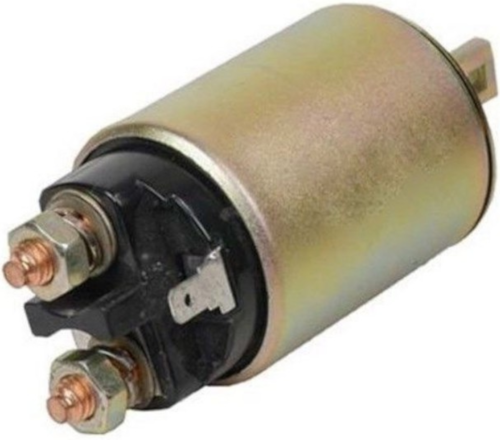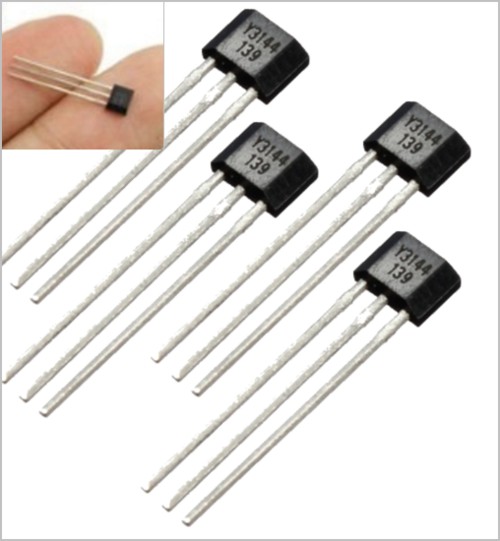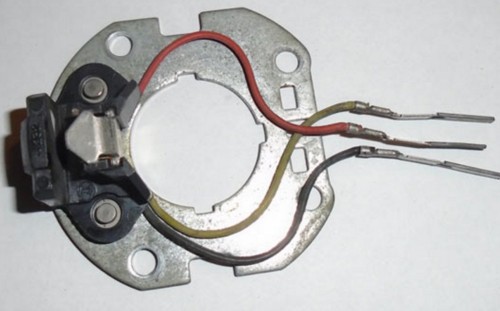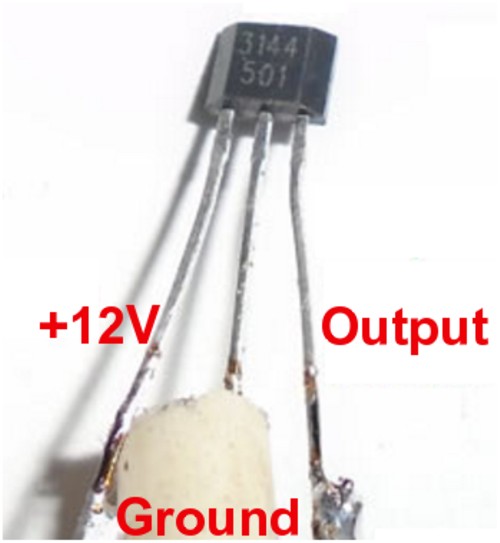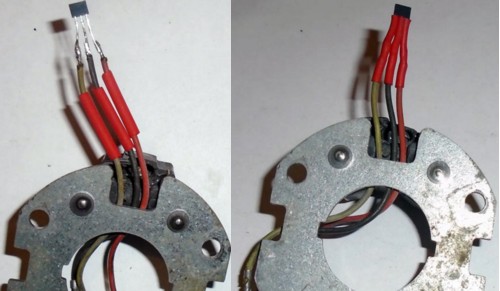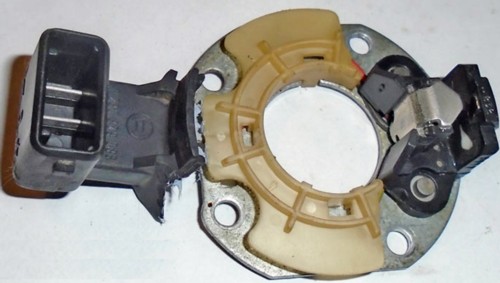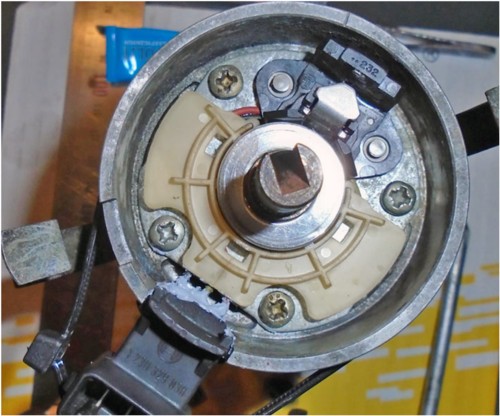TO CHIP OR NOT TO CHIP
The word chip has entered our vocabulary by force and is loosely used in everyday speech but it has absolutely nothing to do with deep fried thin potato slices or potato wedges. A chip in this sense refers to a mico-chip, as in monolithic integrated circuit, or micro computer chip, or micro processor integrated chip or just IC for short. Integrated Circuit chips or IC's first appeared in the 60's as a complete electronic circuit etched onto a small piece ("chip") of semiconductor material, embedded in a dual inline plastic package. It essentially replaced much of the circuitry dominated by silicon transistors or entire silicon transistor circuits, which started replacing vacuum tubes just a decade previously. In a nutshell, a single IC can contain hundreds or thousands, or millions, or even billions of transistors on a single piece of silicon just the size of an adults "pinky" nail, subject to its level of integration. The level of integration range from small scale integration, to large integration (LSI), to very large scale integration (VLSI), each using up to as many as a million transistor to form logic gates, flip-flops and multiplexers.
 |
| Small integration (SSI) and LSI Analogue and digital Chips |
Over three decades, IC's metamorphosed from a meager 8 pin dual inline package, for example the analogue NE555 timer chip, to the digital but now obsolete 132-pin package i386 processor, to several other surface mounted low-profile quad flat packages (LQFP). But within a few short years we surpassed the Pentium 4 chip and arrived at the Intel Core i7 Thin Quad Flat Package (TQFP) processor. The most current Intel chip to date, is the LGA 1151 Socket, Coffee Lake Quad Core Computer Processor. However, somewhere between theses two extremes, PLCC's, ROM's, PROM's, EPROM's, EEPROM's, RAM, SRAM, DSRAM, PSRAM, Flash Memory, PROFET Highside Power Switches, Microprocessors and 32-bit microcontrollers evolved.
Some specifically designed for the automotive industry, for use in Engine Control Module's (ECM), Electronic Control Units (ECU's) Transmission Control Units (TCU's), Anti-skid Braking System ABS units and so many other automotive controllers. Automotive Chips have been around for several years, but is currently in great demand, and to say that this technology has evolved, is probably the understatement of the century. In fact Automotive Chips advancements progressed rapidly, improved unequivocally, matured almost instantly and became largely scalable and highly integrated. Software programming gave these Automotive Chips a degree of artificial intelligence, most of them configured by car manufacturuers for average performance to extend engine and transmission lifespans so that they would last through the warranty period.
 |
| Stainless Steel Exhaust Downpipes |
Since Automotive Chips are programmable and configurable, many have ventured into chipping them. Chipping an ECM / ECU for some means removing the ROM containing the ecu's stock maps and replacing it with a new chip containing maps altered for enhanced performance. However, a ECU dump can be changed with a hex-editor and the ROM can be reflashed with diagnostic software like, REVO Stage 1 Performance Software, TOAD, RomRaider, EcuFlash, VAG CAN Pro (VCP), Winols, Galletto, etc, using the appropriate Chip Tuning / Flashing Interface. Hacking an ECU can be pretty straight forward, especially with VAG COM diagnostic tools, which permits you to find where the various maps reside in memory, then filling them with new or experimental values.
 |
| K&N VW Polo air Filter induction kit |
This procedure is not as simple as it sounds and is best left to the tweekers who have some knowledge of MISRA C. MISRA C is a software development standard for the C programming language specifically developed by the Motor Industry Software Reliability Association. Since ECU programming is a very specialized business, any errors or accidental changes can prove disastrous and scramble your ECU permanently, unless you have a saved ECU dump to revert back to. ECU maps can be found strewn all over the internet especially those for older cars. But be forewarned, they may not work as expected.
 |
| Carbonised Valves before and after |
Having said that, many car enthusiasts want their cars tweaked for more power, cleaner emissions, better fuel economy and better performance, expecting at least 20% more power and at least 20% more torque. But these are not realistic expectations for non-turbo cars with a standard engine. Also chiptuning is subject to climate and atmospheric pressure meaning a engine tuned for top performance at sea level will not perform optimally at high altitudes and vise versa. Also remember that tuning for performance is at the other extreme to tuning for economy. According to my son, whose VW Golf 7 R was optimised with RaceChip One for Increased Acceleration & Performance with a 76mm stainless steel downpipe, Intake Induction kit & Intercooler upgrades, Blow Off Dump Valve Adapter Spacer Kit, DPF & EGR Removed and fitted with a Bilstein B12 Eibach 30mm/30mm Lowering Suspension Spring Pro Kit, when he speeds he can actually see his fuel level decrease as the needle races towards empty. Definitely money not well spent.
 There are several chiptuning workshops strewed throughout South Africa, some better than others and some not worth their salt, all offering Volkswagen ECU Remapping and Chip Tuning services for older and newer models. Among them are, Alpha Performance Inovation, Chiplogic, Tuned2Race, ATM Chiptuning, CPI Performance Innovation, DTE Systems SA, Wulfchiptegnik, Unichip Performance Tuners and GT Performance, etc. I've have several friends who had their VW's Chiptuned but they are definitely not happy with the results, saying that ECU Remapping and Chip Tuning is just a ripoff, it's like pouring money down a drain.
However, for the DIY car enthusiast with an older 2.0L VW Citi Golf, weber 40mm sidedrafts, a 300deg cam and a solid lifter head, is a feasible performance investment that can deliver 112kw 207nm. Add a Blow Off Dump Valve Adapter Spacer Kit to vent extra boost air into the atmosphere instead of sending it back into the engine's intake manifold besides the WHOOOSHH sounds is really awesome!!
There are several chiptuning workshops strewed throughout South Africa, some better than others and some not worth their salt, all offering Volkswagen ECU Remapping and Chip Tuning services for older and newer models. Among them are, Alpha Performance Inovation, Chiplogic, Tuned2Race, ATM Chiptuning, CPI Performance Innovation, DTE Systems SA, Wulfchiptegnik, Unichip Performance Tuners and GT Performance, etc. I've have several friends who had their VW's Chiptuned but they are definitely not happy with the results, saying that ECU Remapping and Chip Tuning is just a ripoff, it's like pouring money down a drain.
However, for the DIY car enthusiast with an older 2.0L VW Citi Golf, weber 40mm sidedrafts, a 300deg cam and a solid lifter head, is a feasible performance investment that can deliver 112kw 207nm. Add a Blow Off Dump Valve Adapter Spacer Kit to vent extra boost air into the atmosphere instead of sending it back into the engine's intake manifold besides the WHOOOSHH sounds is really awesome!!
 |
| Blow Off Dump Valve Adapter Spacer Kit |
ECU Remap via OBD port, ECU Reprogramming & Software upgrade & Chip Tuning, Injection timing, injection quantity, injection pressure, boost pressure and air mass flow, Better Throttle Response, Optimized Fuel Efficiency. Enhanced Throttle Response, GTI VW Polo GTI, VW Golf 5, VW Golf 6 R, VW Golf 6 GTI, VW Golf 7 R, VW Golf 7 GTI, VW Polo TDI, VW's Audi A4/A5/S5 Audi S3 8V Audi S3 8P Audi RS3/TTRS Audi RS5 / RS6



